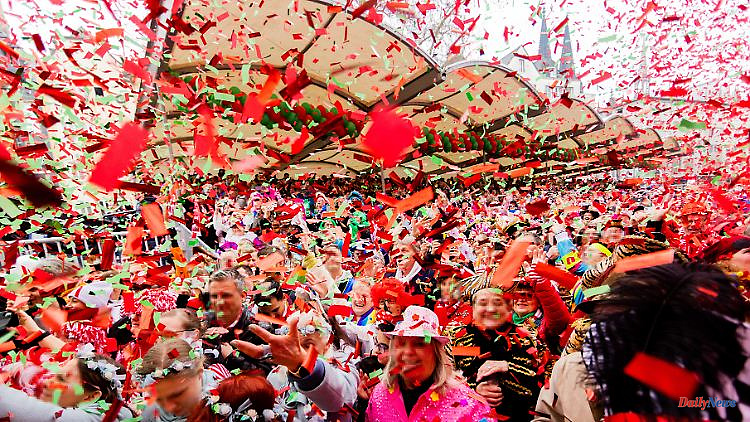A few days after carnival, the number of coronavirus infections in Cologne increases sharply. The official seven-day incidence, which only records the officially known infections, jumps to over 300 within a few days - well above the nationwide values. How is the number of cases developing in the other strongholds?
These are the first major mass events in Germany after the corona protection measures caused by the pandemic were lifted - and promptly the number of Covid cases in Cologne went up across the board. Hundreds of thousands enthusiastically celebrated the fifth season in the cathedral metropolis with pompous meetings, street parades and festive exuberance. Exuberant hustle and bustle also prevailed in Düsseldorf, Mainz and Aachen last weekend. For the first time in three years, Shrove Monday parades rolled through the foolish strongholds at the height of the street carnival.
In the dense crowds on the streets and indoors, it was apparently not just the seasonal infections with colds that occurred. The number of coronavirus infections increases significantly in the days after Ash Wednesday, as an ntv.de evaluation of the current corona data situation shows.
The data from the health authorities shows a significant increase in Covid infections. In Cologne, the seven-day incidence climbs steeply within a few days after carnival. The official statistics only cover part of the infection process: these figures only include the officially known, laboratory-confirmed corona infections. As a rule, confirmation by means of a PCR test is required for this.
On the other hand, coronavirus findings based on the results of privately performed rapid tests are not included in the number of cases. That means: It can be assumed that the incidence values only partially cover the infection process and that the wave of infection after the carnival in Cologne should actually be much more extensive.
The Landeszentrum Gesundheit (LGZ), which is responsible for North Rhine-Westphalia, and the Robert Koch Institute (RKI) for Cologne are currently reporting a case rate of 321.7 infections per 100,000 inhabitants. For comparison: The nationwide seven-day incidence is currently 122.6 and in North Rhine-Westphalia a total of 176.8. The development in Cologne also exceeds the incidence values of other carnival strongholds such as Aachen (112.5) or Düsseldorf (167.2). So far, the steep increase in the number of cases seems to be limited to Cologne.
"The wave of illness is here," confirmed a spokeswoman for the General Practitioners' Association, with a view to the situation in the North Rhine region. "As expected, sick leave has exploded, sick leave has doubled in the last few days." Most patients complained of cold symptoms. These are both classic colds and flu or corona. According to the association, the number of cases of illness will continue to increase in the next few days. The reason is that the pathogens are now being spread in schools after the long carnival weekend.
In NRW and Rhineland-Palatinate, the test and isolation requirements as well as the mask requirement in local public transport have been lifted since the beginning of February, as is the case everywhere in Germany. The unrestricted celebrations during the Carnival or Fastnacht weekend in Mainz were also in the public perception under the motto of a return to normality. In the past two years, the street parades on Shrove Monday had been canceled due to the pandemic.
According to an estimate by the Düsseldorf Carneval Committee, around 600,000 people were out and about in Düsseldorf alone. A spokesman for the Mainz Carnival Association assumed 550,000 visitors. A spokeswoman for the Cologne Carnival festival committee, on the other hand, said it was impossible to seriously estimate the number of spectators. But there is “a very, very large rush” – even more than in the years before Corona.












